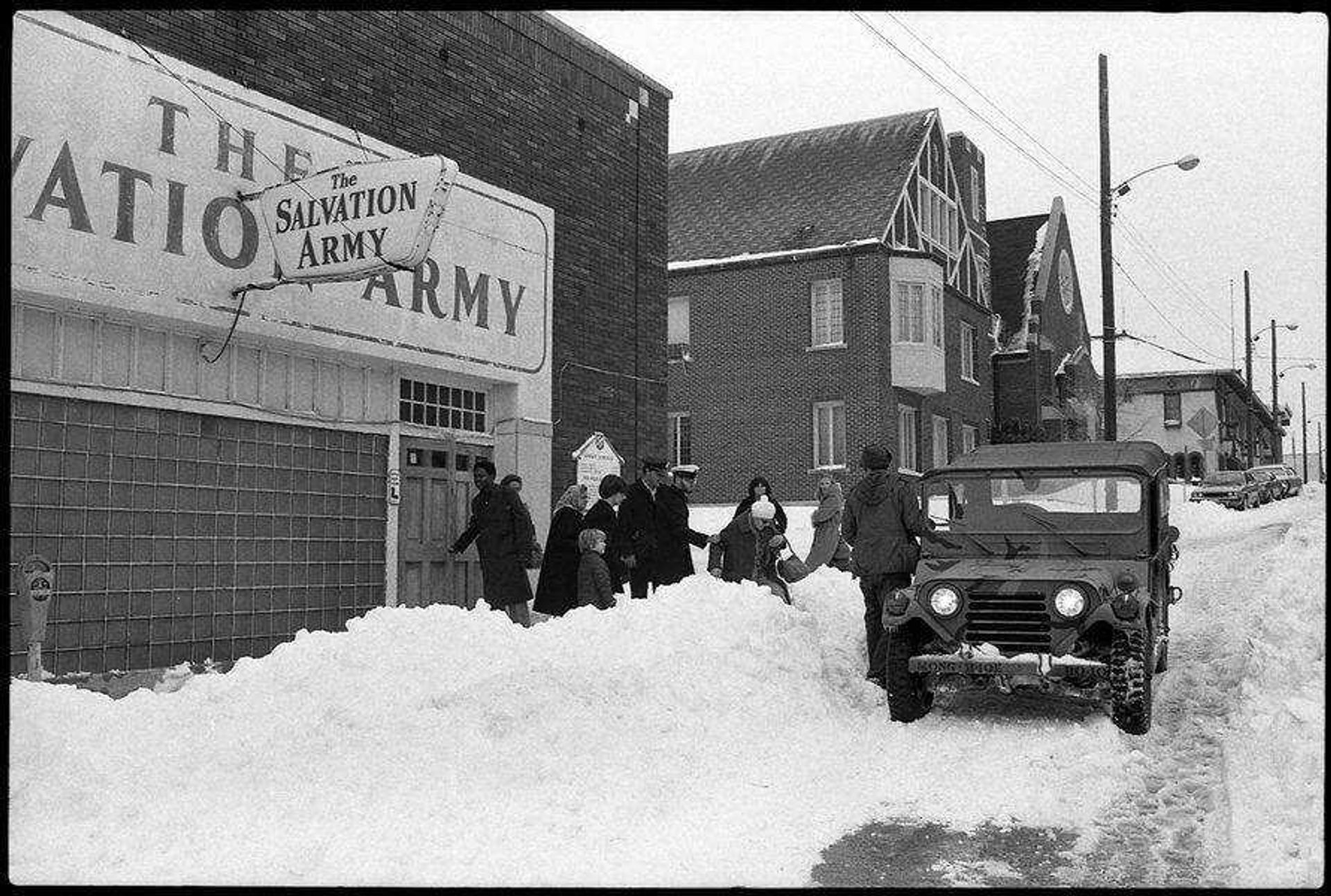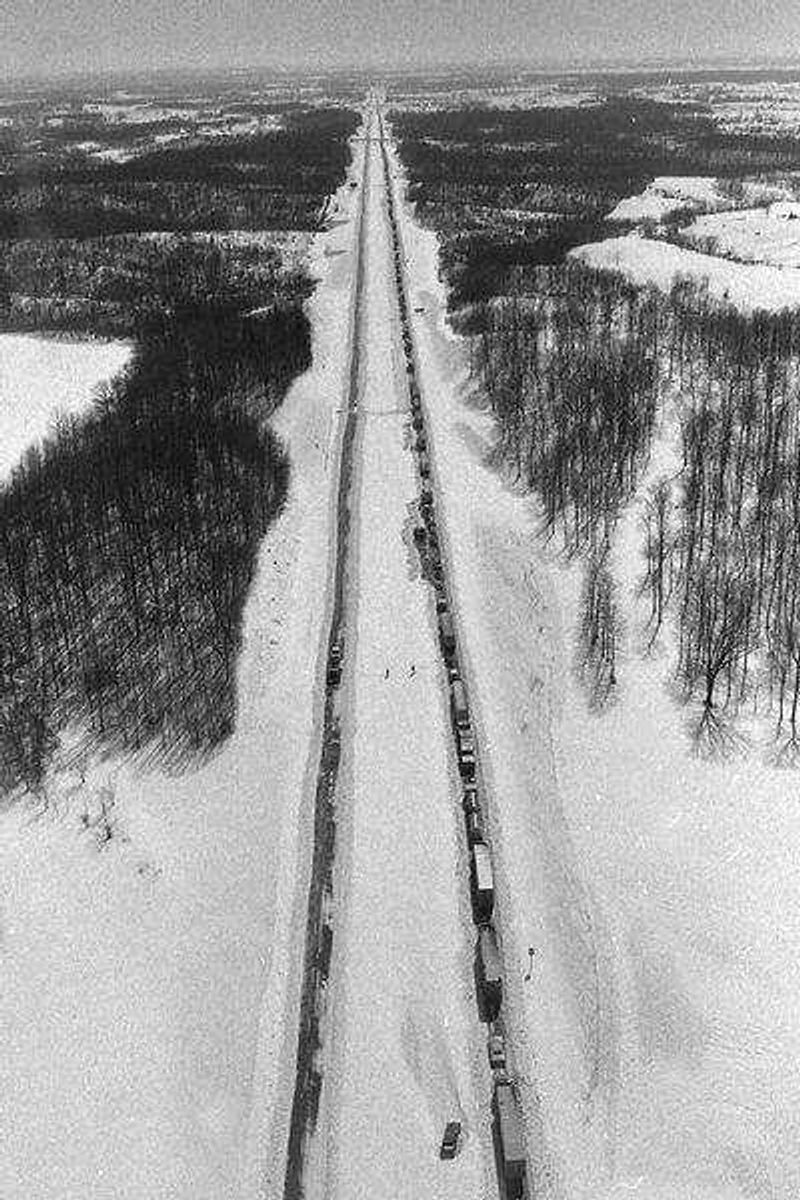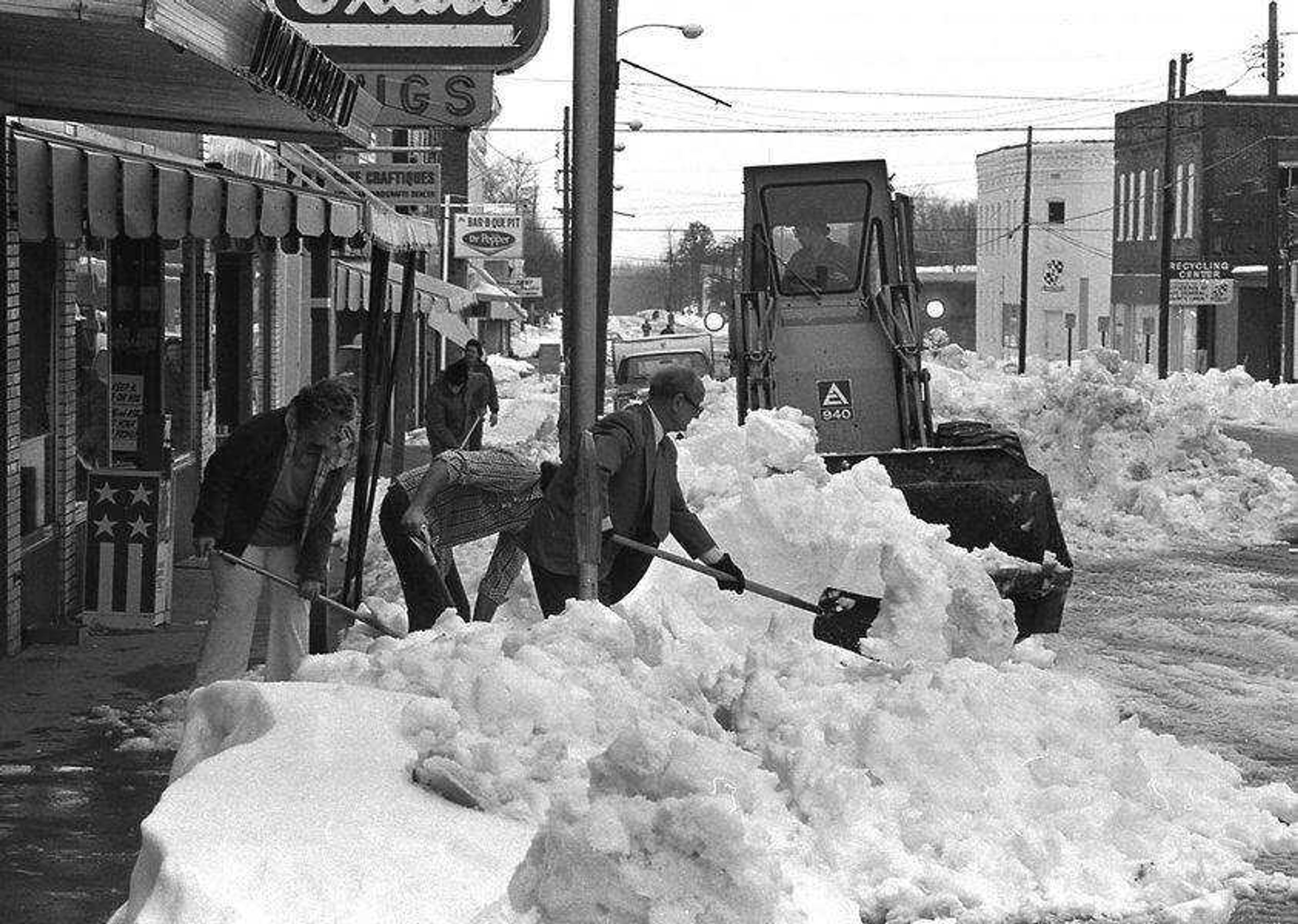What's past is prologue — remembering the blizzard of 1979
Few who were living in Southeast Missouri at the time are likely to forget the events of Feb. 24-25, 1979, when an estimated 24 inches of snow fell in a matter of hours, paralyzing traffic, closing schools and crippling movement of all sorts in the region...
Few who were living in Southeast Missouri at the time are likely to forget the events of Feb. 24-25, 1979, when an estimated 24 inches of snow fell in a matter of hours, paralyzing traffic, closing schools and crippling movement of all sorts in the region.
"I think of it as a blizzard as someone who lived through it and still regard it as one of the most unusual moments of my life," said Frank Nickell, historian.
A blizzard, according to the National Weather Service, refers to a period characterized by "considerable falling and/or blowing snow reducing visibility to less than one-fourth of a mile coupled with winds of at least 35 miles per hour and lasting for at least three hours."
All of those conditions existed on that weekend.
"It was a deluge of snow driven by high winds that went right across Interstate 55 and Cape Girardeau must have been the high point in terms of snow depth," remembered Nickell.

Timeline
The weekend forecast, according to previous Southeast Missourian coverage, was for rain changing to snow with possible accumulation of 1 to 2 inches.
The rain began Saturday night, recalled as a steady downpour driven by gusts of wind and accumulating 1.12 inches on the rain gauge at what is now Cape Girardeau Regional Airport.
Snow began around 3 a.m. Sunday and by 6 a.m., measured only 3 inches.
By 6:30 a.m., the skies opened.

"Great skeins of snow, blowing horizontally at times and at other times slanting down in blinding torrents, made for a huge whiteout. Vision was no more than 50 yards and only rarely could trees 100 [yards] away be glimpsed -- then only dimly as through a veil," wrote the newspaper's executive editor John L. Blue on Feb. 27.
"The snow slowed around 1 p.m., slowed even more by 3 p.m. and finally came to a halt around 5:30 p.m. A trip outside measured drifts up to 3 feet by yardstick -- and on level ground, 23 to 26 inches. Except for the wind, all was silence."
Nickell said some Southeast students rolled beer kegs down Broadway after the blizzard.
Cape's snowplows could not emerge from the municipal garage on Kingshighway Street, he remembered, due to snow drifts being so deep.
At the time, Nickell was also managing, along with his wife, the Humane Society of Southeast Missouri on Boutin Drive, now known as SEMO Pets.
"The animals needed to be fed, so I set out on Sunday morning to walk to the shelter," Nickell said, a 4-mile journey he thought would take a couple of hours.
"It took me all day to get there. The visibility was so poor I couldn't see where the road was," he added, noting navigating the deep snow drifts left him "totally exhausted" by the time he arrived.
Other memories
- Kristi Nitsch, executive administrative assistant for Cape Girardeau County Commission in Jackson, was a student at Meadow Heights School District in 1979.
"We ended up missing a little over a month of school. I recall a lot of sleigh riding. You just couldn't do anything that week. We lived out in the country. You couldn't get a tractor to go anywhere or any other kind of vehicle either. We were just stuck at home, which was kind of nice for a while," Nitsch recalled.
"Once we did go back, that was at a time, in the late '70s, when missed school days weren't forgiven the way they are now. We ended up going to school on Saturdays until the end of June to get our days in."
Nitsch also recalled her grandfather, who lived on Albert Street in Cape, received food from the National Guard.
"My granddad wasn't prepared because the forecast wasn't calling for that type of system," she noted.
- Beth McFerron, now a Cape Girardeau Realtor, had similar recollections.
"On Sunday, my car was completely covered with snow and my neighbors came down to help dig me out. On Monday, I remember walking all over Cape along with a lot of other people. It was a great neighborly time with people helping each other," she said, adding she wasn't able to get back to work at the old First Federal Savings and Loan downtown on Broadway until Wednesday of that week.
Lifelong memory
"This was a very freak weather event with just a narrow strip of snow. It shut down I-55 and all the motels were full. People couldn't move; they couldn't go north or south," recalled Nickell.
"Everybody was scared to death of a fire because fire engine crews couldn't get out. The National Guard trucks were navigating through the city, and there were also helicopters helping out," he added, remembering a pregnant woman north of Cape who was experiencing birth pains had to be life-flighted to a local hospital.
Connect with the Southeast Missourian Newsroom:
For corrections to this story or other insights for the editor, click here. To submit a letter to the editor, click here. To learn about the Southeast Missourian’s AI Policy, click here.









